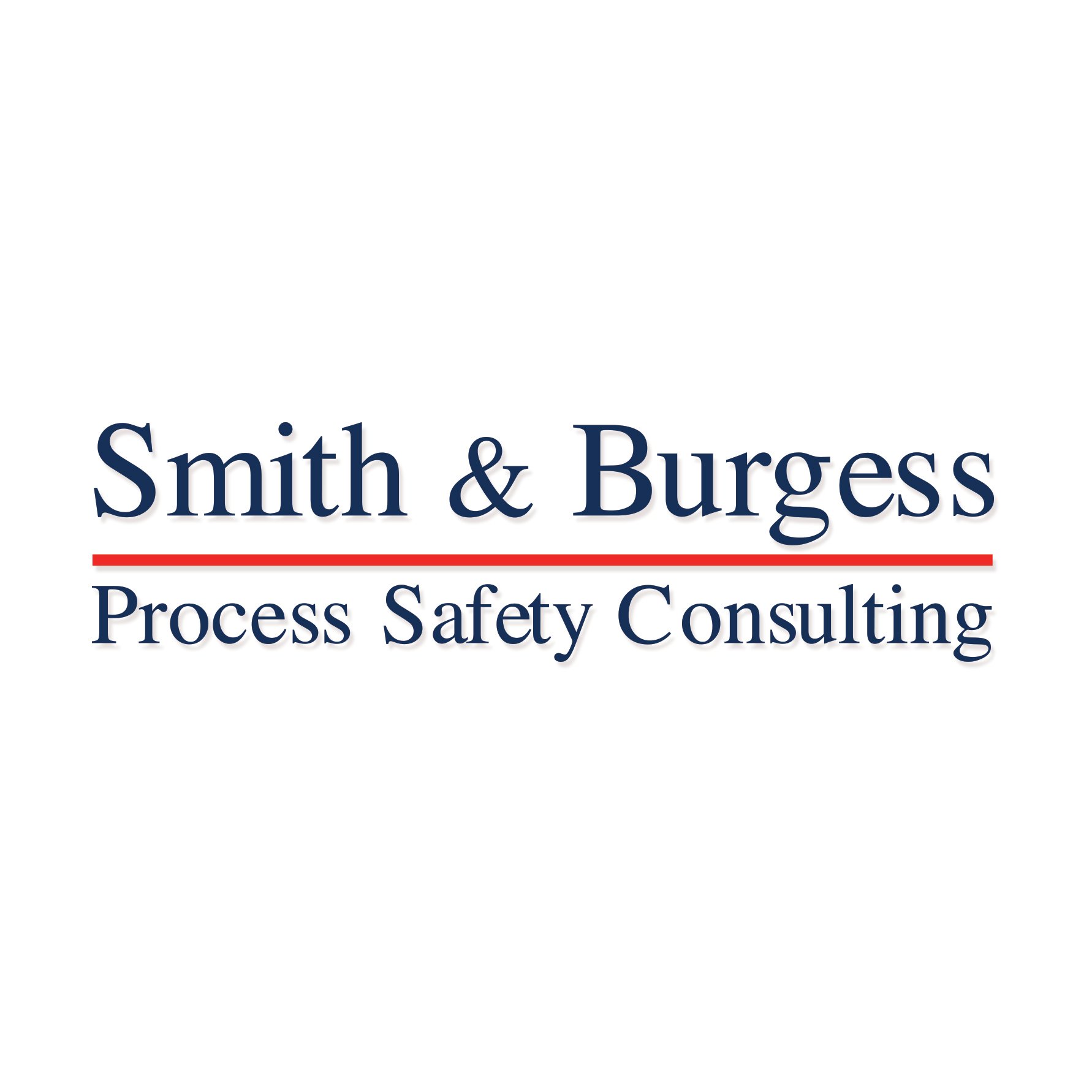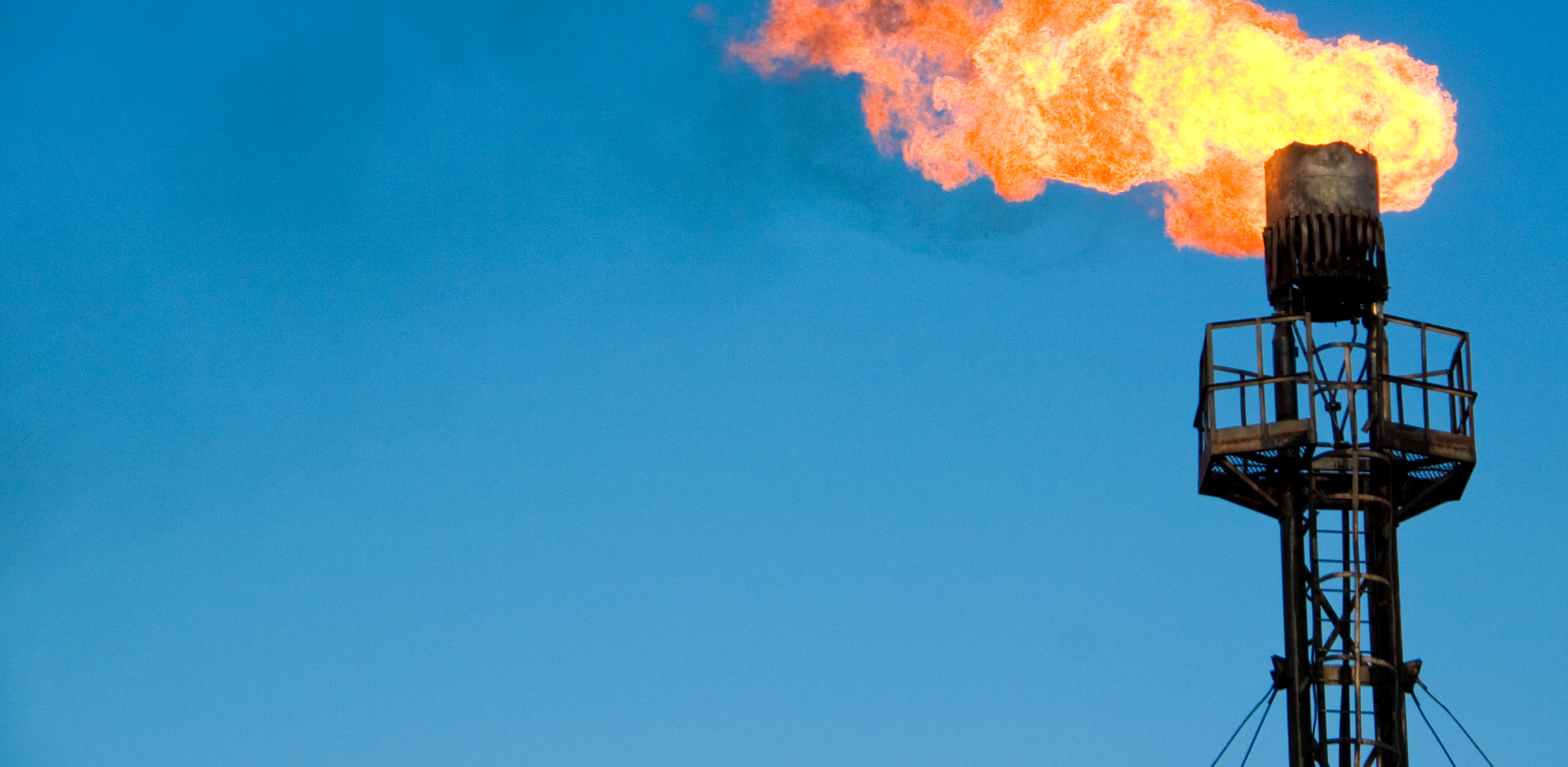When John and I started Smith & Burgess in 2007, we envisioned a company that would make the industry safer with a focus on Customer Service, Expertise, and Integrity. We felt these core values would create an engineering firm we could be proud of. Over the past 15 years, there has been a lot of change in the industry. Environmental and renewable fuels projects are more common now than ever. However, flares still seem to be undersized, facilities are still changing, and projects are ongoing. From the volatility in oil prices in 2009 to the boom prior to the pandemic… and then COVID-19: providing PSM engineering services has definitely kept us on our toes. But through it all, these core values remained stalwart and have served as a framework by which we make decisions in running the company.
Dustin Smith, P.E.

Recent Posts
How Relief Valve Assembly Affects Stability Calculations
About the Author
Mr. Smith has over a decade of experience, with a specialization in relief systems design and documentation, PSM compliance audit reviews, heat and material balance generation, PHA concern resolution, and flare system integration and optimization. Dustin is a chemical engineering graduate of Texas A&M University, a licensed Professional Engineer in Texas and LOPA certified.
Topics: Relief Systems, Relief Device Study, Relief System Design, Relief Systems Revalidation, Process Safety
The Opportunity:
A major United States refinery, with a significantly high Nelson Complexity Index rating, had nine flare stacks and multiple engineering contractors working within the facility which made managing their flare design and documentation a challenge.
Topics: Flare Study, Flare System Documentation, Case Study, Flare System, Refinery, Flare Header, Flare Management, Evergreening
Case Study: Flare Modifications Due to Rate Increase
The Opportunity:
A major United States refinery was in the process of installing a site-wide rate increase and hired a competing engineering firm to perform the feasibility study. The engineering firm sized their crude fractionator and recommended new relief devices that would require modifications to their existing flare header. The refinery’s corporate office called Smith & Burgess and asked us to perform a third-party review on the engineering firm’s recommendations.
Topics: Flare Study, Case Study, Flare System, Refinery, Engineering Review, Flare Header, Third Party Review
Top 5 "RAGAGEP Deviations" in New Construction
Anyone tasked to start up a unit knows the engineers who designed it rarely miss a thing...
Every bleeder valve is in the right place, spectacle blind turned correctly, and bypass line scrutinized. So why would the flare and relief systems design be any different? The truth is that they are not. Engineering Firms today have perfected the art of throwing waves of engineers on design-build projects. Unfortunately for those engineers, relief and flare system designs are governed by a maze of regulations, codes, standards, and guidelines (collectively known as Recognized and Generally Accepted Good Engineering Practice or RAGAGEP). Experienced Project Managers understand that relief and flare specialists are needed to ensure their projects are safely and properly designed before any construction occurs.
Topics: Did You Know?, Process Safety Management, Detailed Engineering, Maintenance Operation Studies, Relief System Documentation, Process Safety Optimization
Case Study: Relief Systems Evaluation and Mitigation
The Opportunity:
A major United States Refinery hired Smith & Burgess to perform a site-wide revalidation.
Topics: Pressure Relief Valves, Relief Systems, Case Study, Refinery, Engineering Review, PRV Study, PRV, Relief System Design, Relief Systems Revalidation, Undersized PSVs
Top 5 "Best Implemented" PSM Processes - A PSM Check-up
Top 5 "Best Implemented" PSM Processes
- A PSM Check-up
Recently, as a follow-up of our webinar series, you might have taken part in the Smith & Burgess' "PSM Check-up" industry survey. This article is a reality check on what areas the survey participants thought they were doing well in compared to OSHA PSM standards as defined in OSHA 1910.119. In addition to looking into historical findings that were defined by our numerous PSM audits, we have also included some statistics from OSHA NEP Citations/Violations along with reviewing the 804 Chemical Safety Board Recommendations. This helps us to ensure that our project PSM audit's results are consistent with regulatory findings.
We see quite often that outside reviews help a facility find the regulatory gaps in their PSM processes that may otherwise go unnoticed by the client's onsite staff. It is our hope that the following items will help you see that a properly executed PSM audit can shine a light in the areas that really could use a little TLC. This independent third-party audit is a proven way to find gaps in processes.
Topics: Did You Know?
Case Study: Elimination of a Remote Flare System
The Opportunity:
An offshore floating production facility was originally designed with two flares: one on a boom riser and the other remotely located. Due to the design, the remotely located flare required large amounts of gas to operate. The site was interested in reducing operational costs and emissions by consolidating the two flares into the flare on the boom riser, eliminating the remotely located flare. However, there were concerns with the feasibility of such a flare consolidation, the effects of thermal radiation, and the possibility that system changes would increase the backpressures on the relief devices. Smith & Burgess was hired to review this system.
Topics: Flare Mitigation, Flare Analysis, Flare Study, Case Study, Flare System, Refinery, Engineering Review, Flare Header, Flare Management, Flare Optimization
The Opportunity:
A recent Layers of Protection Analysis (LOPA) of a cavern storage facility identified several equipment installations requiring safety system upgrades. While the facility management wanted to follow proper review procedures, these proposed mitigation options seemed excessive. As a result, the site hired Smith & Burgess to review the safety systems upgrades to ensure the installations were needed and met regulatory requirements.
Topics: Action Item Resolution, Case Study, Refinery, PSM, PSM Review, OSHA, PSM Audit, Layers of Protection Analysis, Mitigation, LOPA
Case Study: Wellhead Gathering System Overpressure QRA
The Opportunity:
A review of the “overpressure protection plan” for a wellhead gathering pipeline found that the potential for “multiple simultaneous well shutdown system failures” had been overlooked. The flowing pressure on the inlet to the well choke valve exceeded the allowable pressure in the gathering system. If multiple well safety systems failed, there would be an unacceptable potential for large-scale loss of containment. A Quantitative Risk Assessment of the entire system was needed to determine if the existing overpressure protection system, as a whole, met corporate and regulatory requirements. Initially, the protection plan suggested additional shutdown hardware and increased testing frequency. Smith & Burgess was hired to review this system.
Topics: Detailed Engineering, Overpressure Protection, Case Study, Regulatory Compliance, Quantitative Risk Assessment, QRA
Spring Loaded Relief Valve Details: Valve Internals
Spring Loaded Relief Valve Details: Valve Internals
A spring loaded relief valve is used in many applications to protect the over pressurization of vessels, pipes and containers. Conventional and balanced bellows relief valves are examples of spring loaded relief valves. Codes and standards like ASME, API,and ISO (to name a few) require that these relief valves are sized to have a relieving capacity that is sufficient to maintain the integrity of the system by preventing the internal pressure for exceeding the design limits. In general, the relief valve is designed and selected by the relief systems designer to meet process-engineering requirements.
Topics: Did You Know?
The Opportunity:
As part of a relief valve study, a competing engineering firm recommended a major United States refinery to replace multiple relief valves and modify the associated piping on a column system in order to mitigate for a higher flare load. The proposed changes would have cost the refinery approximately $300,000. Unsure of the recommendations and associated expenses, the refinery reached out to Smith & Burgess to review the EPC’s findings.
Topics: Pressure Relief Valves, Case Study, Refinery, SIL Design, SIS Design, PRV Study, Third Party Review, Overly Conservative Assumptions
Case Study: Third Party Relief Valve Mitigation Review
The Opportunity:
A major US refinery used a competing engineering contractor to perform a flare and relief systems analysis. Upon completion of the project, the refinery was left with a list of facility upgrades that management deemed excessive. Smith & Burgess was hired to review the relief and flare systems documentation and provide engineering solutions that met corporate and industry requirements.
Topics: Pressure Relief Valves, Relief Systems, Flare Mitigation, Action Item Resolution, Case Study, Refinery, Engineering Review, PRV Study, Third Party Review, Overly Conservative Assumptions, PRV, Relief System Design, Relief Systems Revalidation, Relief Valve Mitigation, Mitigation
The Opportunity:
A major United States refinery was recommended to spend $2 Million on a temporary blast proof tent during turnaround from a facility siting study conducted by a third-party contractor.
Topics: Facility Siting, Case Study, Refinery, Engineering Review, RAGAGEP, Third Party Review, Overly Conservative Assumptions, Engineering Analysis
Case Study: Gas Plant Detailed Relief System Design Review
The Opportunity:
A recent audit of a “rebuild” design package for a major Asian gas plant identified that the EPC may have failed to follow company or industry standards. The owner needed an engineering review of the entire facilities’ relief systems designs prior to their start up in two months. Any deficiencies in company or industry standards needed to be addressed prior to the facilities’ start up.
Topics: Pressure Relief Valves, Relief Systems, Case Study, Engineering Review, Gas Plant, PRV Study, Third Party Review, PRV, Relief System Design
The Opportunity:
A major United State refinery was proactively ensuring compliance for their PSM Program in preparation for OSHA’s NEP Program. The refinery contacted Smith & Burgess to share best practices on performing PSM / Internal Audits and used this opportunity to train their corporate and site staff to perform future PSM audits.
Topics: Case Study, Refinery, Industry Compliance, Compliance, OSHA, RMP Audit, PSM Audit, Regulatory Compliance, NEP Audit
The Opportunity:
A major United States refinery was in the process of purchasing a new flare system and needed assistance reviewing the bid package from the vendors. The refinery decided that the system was needed based on the outcome of a facility-wide flare study and flare QRA. The new flare system was specified by an EPC and then bid by a major flare vendor. This refinery heard of Smith & Burgess’ flare design expertise and decided to hire us in order to review their vendor’s design package.
Topics: Flare Study, Detailed Engineering, Case Study, Flare System, Refinery, Engineering Review
Part 2: 3 Steps to Integrate "Flare System Management" into Your Project Life-cycle and Maximize the Benefits
Topics: Did You Know?
Part 1: 3 Steps to Integrate "Flare System Management" into Your Project Life-cycle and Maximize the Benefits
The Evolution of American Refining:
Refineries and petrochemical facilities today are faced with a choice: either increase efficiencies and throughputs or be put out to pasture. While the capacity of the average refinery has almost doubled in the past 30 years, per Energy Information Administration (EIA) data, the capacity of the average flare system generally has not. This is not a mere academic issue. In the US, the number of operating refineries dwindled from ~200 in 1985 to only 137 thirty years later (per the EIA); over the same thirty years, the total US throughput has increased by 25% (or significantly more depending on how you quantify the increase in complexity).
This growth in capacities and efficiencies is instrumental in succeeding amongst the rigors of a "keep up or be left behind" economy. Driven by major projects, these process changes include adding new equipment, changing existing processes, and creating more integrated heating and cooling.
However, during all the major project pushes, one thing is often lost, overlooked, or left for the last minute: integrating changes into the existing flare system and doing so in a manner that provides the maximum benefit to the organization.
Topics: Did You Know?
Top 7 Mistakes Lurking in your Relief Valve Calculation Database (and How to Avoid Them)
#7) Relief Valve Database is Outdated Due to Changes in Process
So, you receive your relief valve data base from your Process Safety Consultant and just like a computer bought anytime in history, it is out of date before you open the box. Changes happen at a pretty high pace in most facilities. Dealing with Management of Change must include the effect of the change on the Relief System Database and documentation. Not keeping this documentation up to date makes your relief system documentation almost as valuable as that "new" computer.
TIP: Dedicate resources to keep this relief valve database up to date. These resources could be a team of process engineers, a dedicated relief system expert, or a Process Safety Consultant. Process Safety Consultants can provide this service on a T&M basis, so you only pay for what you use and they bring their experienced knowledge base to perform this function efficiently.
Topics: Did You Know?
The Opportunity:
Regulators will often require that a facility review their process safety management systems on a routine basis. These audits can be performed with internal or external resources. A PSM covered gas plant in the U.S. wanted to hire a consultant to perform an audit. Furthermore, the site wanted the results presented in such a way that they could understand and improve upon the shortfalls of their PSM systems. Based on conversations with other gas plants in the region, the site selected Smith & Burgess to perform the audit.
Topics: Process Safety Management, Case Study, RAGAGEP, PSM, PSM Review, Industry Compliance, Compliance, PSM Audit, Gas Plant, Regulatory Compliance, Gap Assessment, Engineering Standards
Case Study: Flare Gas Recovery Equipment Review
The Opportunity:
In order to meet the minimum corporate and regulatory requirements, a major United States refinery was implementing a Flare Gas Recovery Unit (FGRU) and needed assistance to ensure that the proposed equipment was suitable for their location. The EPC company selected for the project was skilled at refinery greenfield and upgrade projects, but had limited experience with complex flare systems. Smith & Burgess was hired to provide owners with an engineering review of the detailed engineering package prior to final acceptance and construction.
Topics: Flare Analysis, Flare Study, Flare Gas Recovery, Case Study, Flare System, Refinery, Engineering Review, Flare Management, Engineering Standards, FGRU
The Opportunity:
After a routine preventative maintenance inspection, a refinery found that a major flare header was in need of replacement. This header connected two large sections of the refinery, and the management feared that a majority of the facility would need to be shut down to safely replace the header. The site hired Smith & Burgess to perform a Flare Header QRA to determine the minimum amount of necessary shutdowns in order to safely perform the line replacement. The Flare Quantitative Risk Assessment used load probabilities to determine the likelihood of various events, should a power failure occur.
Topics: Flare Mitigation, Flare Analysis, Flare Study, Case Study, Flare System, Refinery, Engineering Review, Flare Header, Flare Management, Flare Optimization, Engineering Standards, Quantitative Risk Assessment, QRA, Rate Increase
The Opportunity:
A major United States refinery worked with an EPC on the site’s action items where they recommended a new flare worth approximately $30 Million. The refinery wanted a third-party review on the EPC’s recommendation and hired Smith & Burgess to verify their results.
Topics: Action Item Resolution, Flare Study, Heat and Material Balance, Case Study, Flare System, Refinery, Flare Load Optimization, Flare Revalidation, Third Party Review, Flare Optimization, Overly Conservative Assumptions
The Opportunity:
Over the course of a four year time period, a major United States refinery was inundated with over 1,000 action items and asked Smith & Burgess to provide recommended resolutions.
Topics: Action Item Resolution, Case Study, Refinery, PSM, PSM Review, PSM Audit, Mitigation
The Opportunity:
The Process Superintendent at a large specialty chemical manufacturing complex had over 600 open action items that were past due and needed direction on how to close them. The action items were assigned to the unit engineers who were unable to dedicate the necessary time.
Topics: Action Item Resolution, Case Study, Refinery, PSM, PSM Review, PSM Audit, Mitigation
Case Study: Flare System Velocity Concern Review
The Opportunity:
After reading about flare header failures due to high velocities, an owner of a production platform in the Middle East wanted to ensure that the initial inerting/purging of the platform and pipeline would not result in flare header piping failure. Smith & Burgess was hired to review the flare systems for safe operation under the high flow rates associated with the initial facility start-up.
Topics: Flare Mitigation, Flare Analysis, Flare Study, Detailed Engineering, Case Study, Flare System, Engineering Review, Flare Management, Flare Optimization, Engineering Analysis, Rate Increase, API 521
The Opportunity:
A major United States refinery was recommended by an EPC to install a new flare worth approximately $60 Million. Unsatisfied with the EPC's recommendations, the refinery asked Smith & Burgess to perform a third-party review to verify their results.
Topics: Flare Mitigation, Flare Analysis, Flare Study, Case Study, Flare System, Refinery, Engineering Review, Flare Management, Flare Revalidation, Third Party Review, Flare Optimization, Overly Conservative Assumptions, Engineering Analysis








